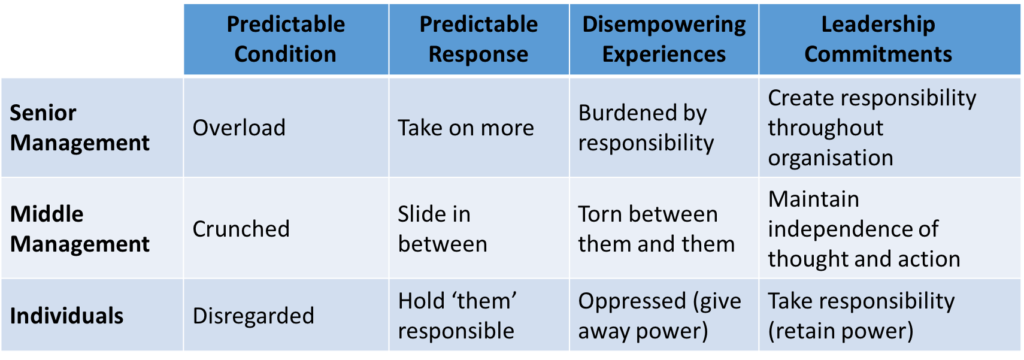Identifying and Navigating Toxic Cultures – Part 1
Jul 06, 2016
It was twelve months after one of my most horrendous experiences of being ‘managed’. I had moved out of the role from hell into a much more constructive environment. At an after work drinks session, I spotted my old manager out of the corner of my eye, peering at me. After a few minutes he came over and we had our first really honest conversation. He shared with me that he felt guilty about the way that he had treated me, but it was “beyond his control” – he had been instructed by the ‘powers that be’ to manage me out of the organisation.”
In our work across various organisations, this kind of story is all too common: people feeling coerced into behaving in a way that they are not proud of, or feeling coerced by something much larger and more powerful than themselves – hallmarks of a toxic culture. While toxic cultures take many shapes and sizes, there are three key conditions that shape any toxic culture:
- There is a system-wide disconnect between individual, team and organisational purpose and intention. Energy is expended on surviving and the self-preservation society is alive and thriving.
- Change seems too hard and it is easier to drink the cool-aid and ‘keep your head down’. People’s reactions reinforce the existing dysfunctions in an organisation rather than creating the conditions for change.
- People exhibit the symptoms of toxic poisoning – illness (physical and psychological), fatigue and incongruence. Anyone entering the organisation will feel the toxicity immediately. Anyone leaving feels the kind of relief and uplift of energy on recovery from a serious illness.
We have observed many organisations that have fallen down the slippery slope towards toxicity, and we don’t believe that we have come across a single person that has enjoyed either creating or existing in such an environment. As abundantly optimistic as it sounds, we hold in good faith that the vast proportion of people act with good intention – yet something causes intention to become horribly unmoored from outcomes. Ways that we have observed people unintentionally creating toxic cultures include:
- Not understanding the full system consequences of their actions, in particular the impact of local decisions on other parts of the organisation
- Treating other people as resources, rather than sensing into their concerns, aspirations and potential
- Abusing their authority to make themselves safe, special or successful; putting their own needs ahead of organisational needs
- Judging others’ poor behaviour as poor intention and carrying that as a torchlight to crucify the poorly behaved
- Mistrusting anyone in a position of authority, and ‘going underground’ with any concerns, rather than attempting to address them directly
- Refusing to adapt to change in order to protect themselves against the fear of losing control or losing their status and authority
- Lack of transparency – not sharing the intention beneath their behaviours
There are ways to navigate your way through a toxic culture, without contributing to its toxicity. Depending on your role and ability to respond in the face of your environment, these are a few things to consider:
- Maintain awareness of the whole system. Aspects of an organisational system include office politics, how decisions really get made, who is really influential and what is not safe to do in the organisation.
- Identify the reinforcing loops in a system that sustain toxicity, and seek ways to break these loops or at the very least not contribute to them. See Oshry’s (2007) suggested ways out in the table below. Consider how you might be contributing to the status quo.
- Be generous in interpreting other people’s intention; when in conflict, ask the other party what their positive intention is. Don’t take things personally; people are often unaware but rarely malicious.
- For those you have responsibility for, seek to understand what is important to them, what concerns them, and what their aspirations are.
- Use your organisational authority with great care. People in toxic cultures will often be suspicious of authority unless they can see the ‘why’.
- Don’t take it too seriously and maintain a sense of humour. The more serious we are the more likely we are to personalise and disconnect.
- Be fully aware you are always at choice to stay or go. Staying may maintain financial security and can lead to a heightened sense of helplessness. However, you may also be able to be a catalyst for change.
If you choose to continue working in a toxic culture, it is really important to care for yourself. The next article in this series, Keeping your soul alive in a toxic culture, explores how we can maintain our sense of self in spite of challenges.
For more background on the process of creating healthy, sustainable cultures, refer to Andrew and Alison’s whitepaper.
Oshry, B. (2007) – Seeing Systems: Unlocking the mysteries of organizational life

San Francisco: Berrett-Koehler Publishers
Our Adaptive Cultures Community
Our Global Community is an enriching space for culture practitioners to share, learn from, explore and develop emerging practices in support of their clients developing needs. On our community platform we share methods and tools, ask questions, conduct developmental conversations and learn together.
Read the Adaptive
Organisations Whitepaper
Download our Adaptive Organisations Whitepaper and learn how to evolve through change and complexity. To receive a copy, please fill in your details below and a copy will be emailed to you.


